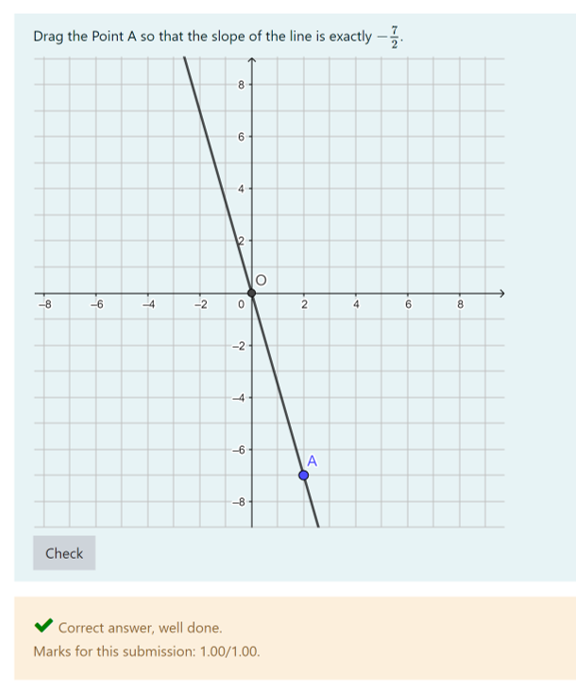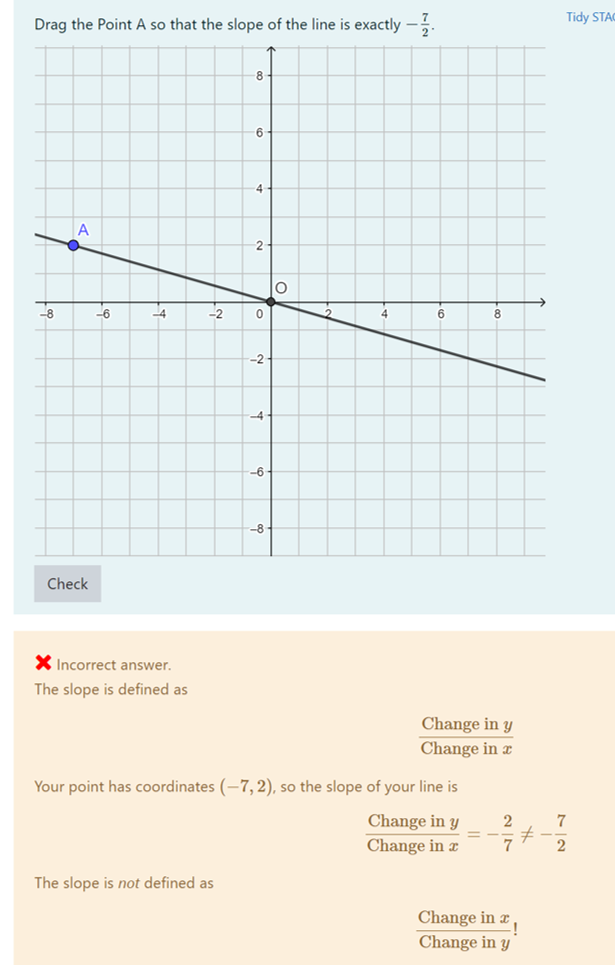Randomly generating mathematical questions
Konstantina Zerva, The University of Edinburgh, UK
STACK offers the possibility to randomly generate questions and give feedback, which is relevant to each specific random variable. The task presented in the video is a very simple one, and it was deliberately chosen to be simple, because the main focus here is the randomisation and the things that question authors need to consider when creating random variables in a question.
The task asks students to drag the point so that the slope of the line is the same as the given value; in this case . The values of the slope are randomised.
When the student load the question they all see the same graph. The initial slope of the line is set to in the GeoGebra app and the point is placed at . The students can move the point along the line and drag it around so that the line changes slopes.
In this example the slop needs to be . The slope is defined as so the students can drag the point and place it at and (point ). Then click the check button and see if their answer is correct or not. Another possible solution here and .

A common mistake that students do is believe that the slope is defined as so if they put at the point they'll receive specific feedback about this mistake.

Let's look at the background of the question and how to deal with the randomisation. All the slopes need to be ratios of two integers (e.g. ) and also they shouldn't simplify to an integer (avoid cases like ).

The variable defines the denominator of the slope. We pick the denominator to be an even number, in this case a power of . We could also predefine a list of even numbers and randomly pick from the list. The variable defines the numerator of the slope. For the numerator we pick the values from a predefined list and these values are all odd numbers. We define the slope as and in our case all the slopes will be fractions.
